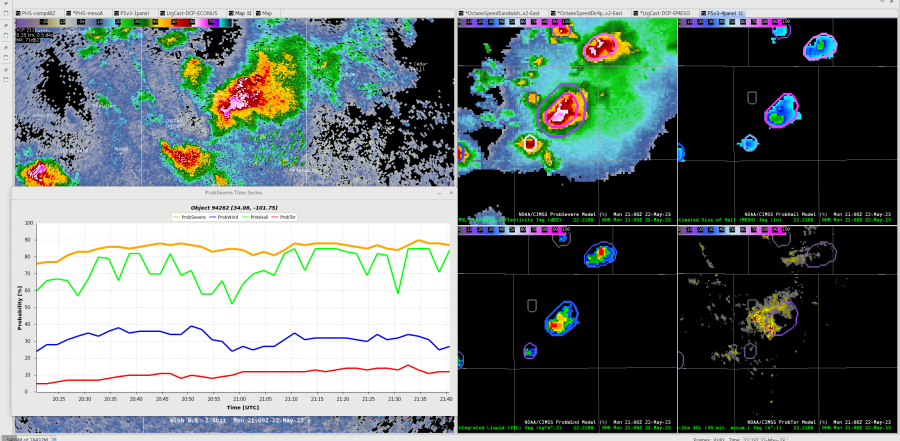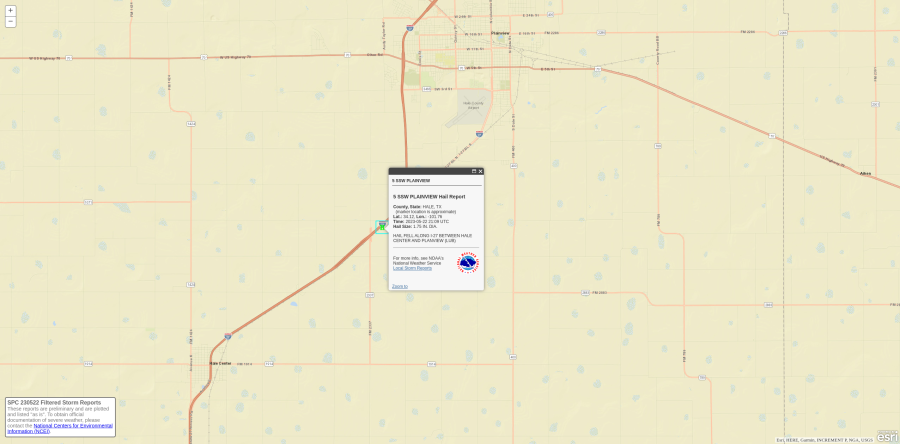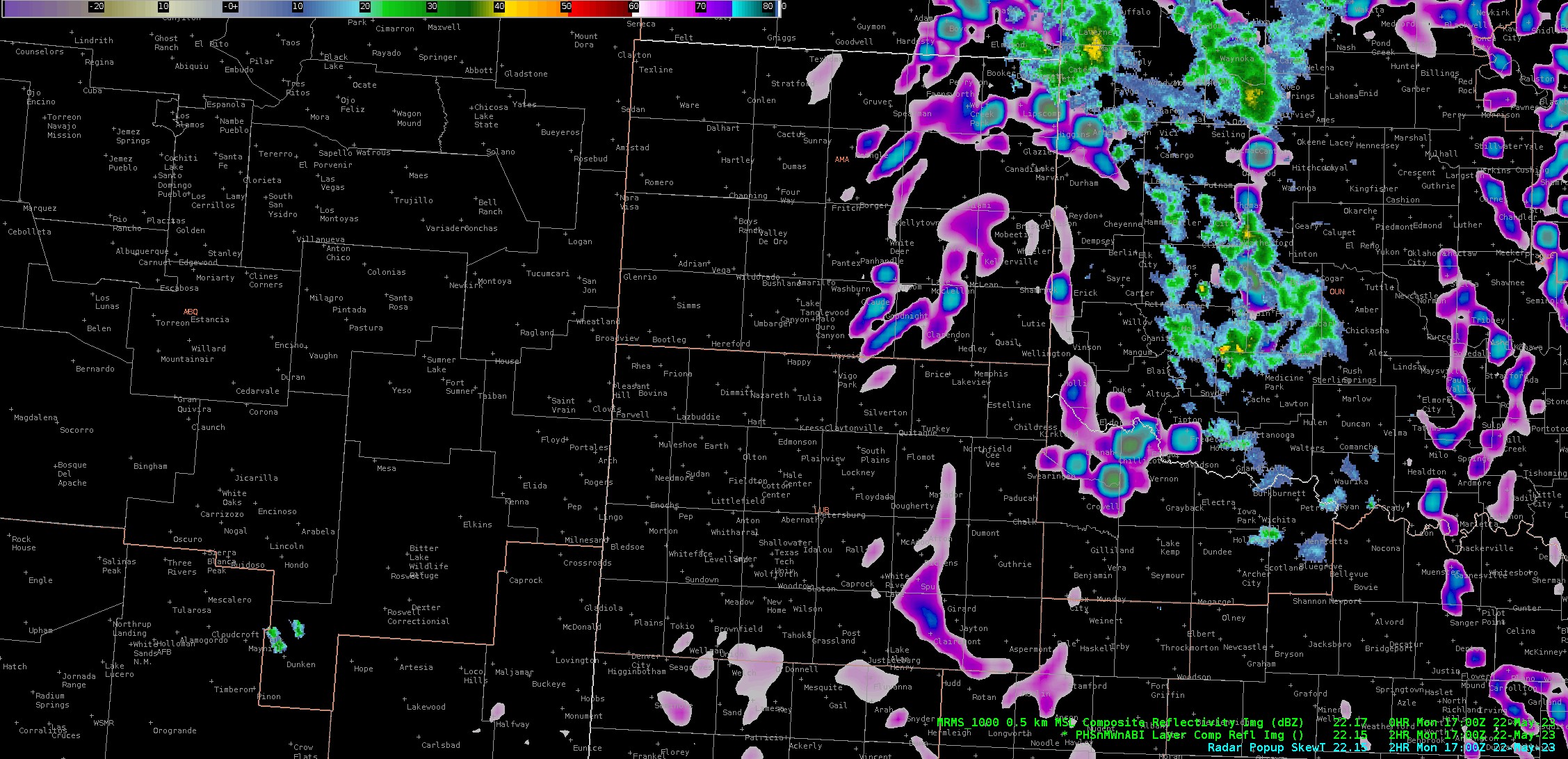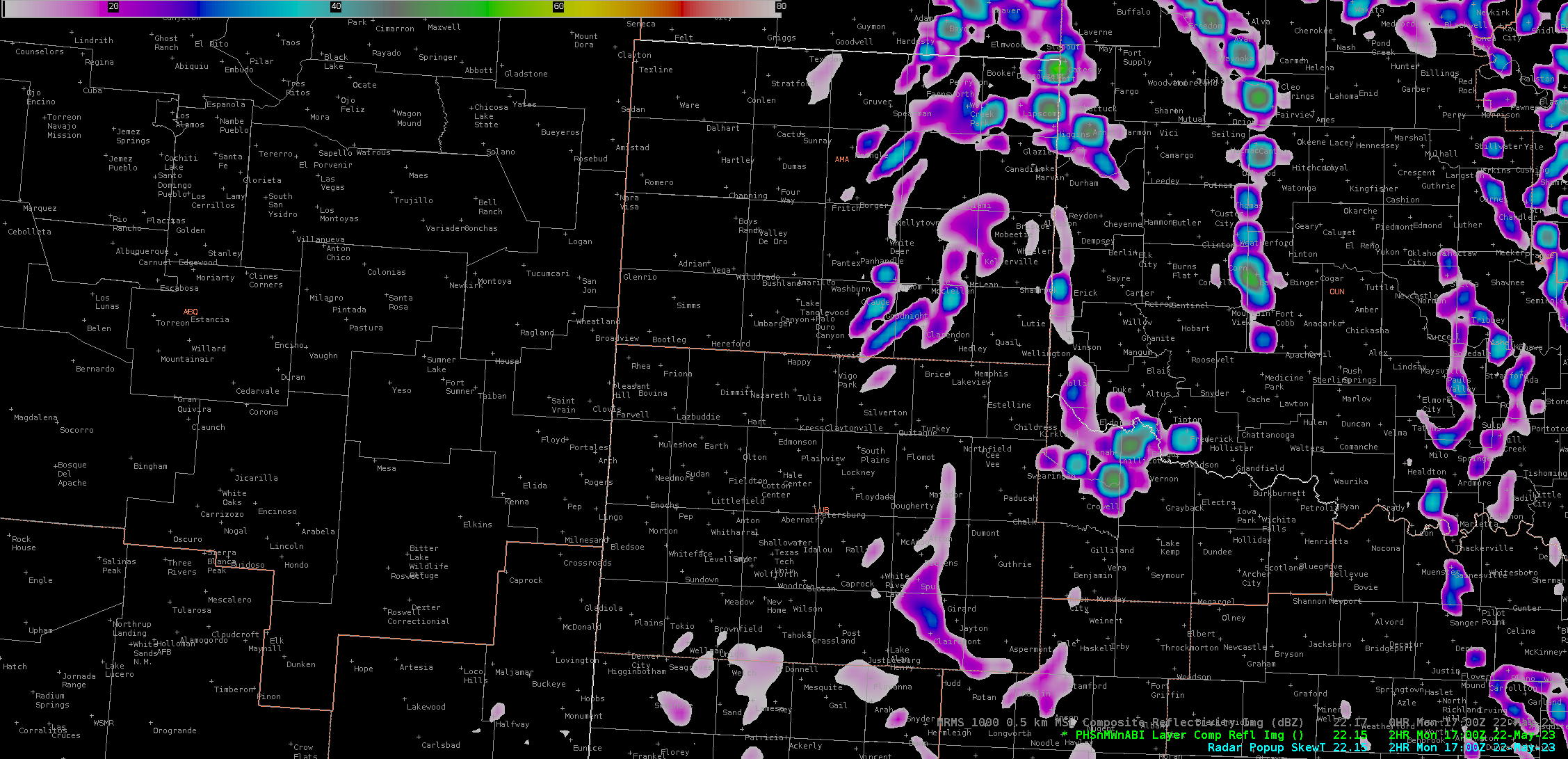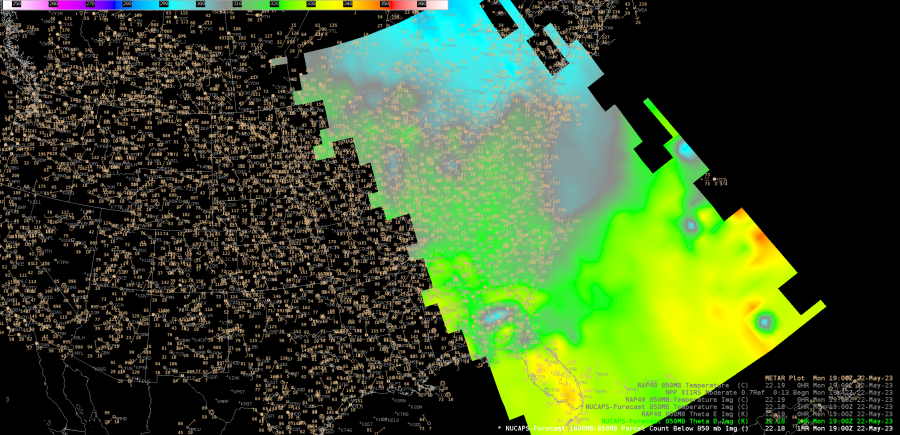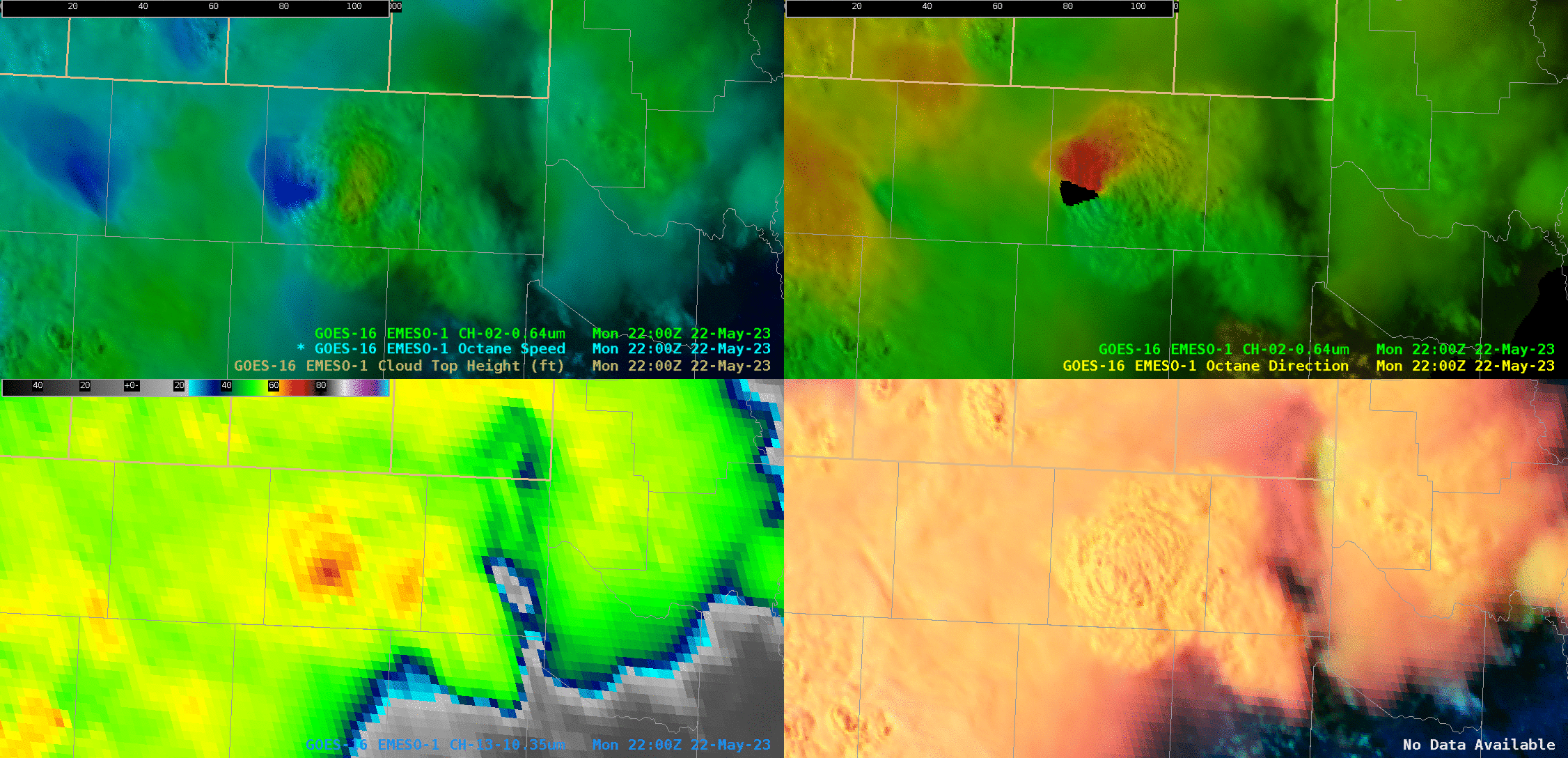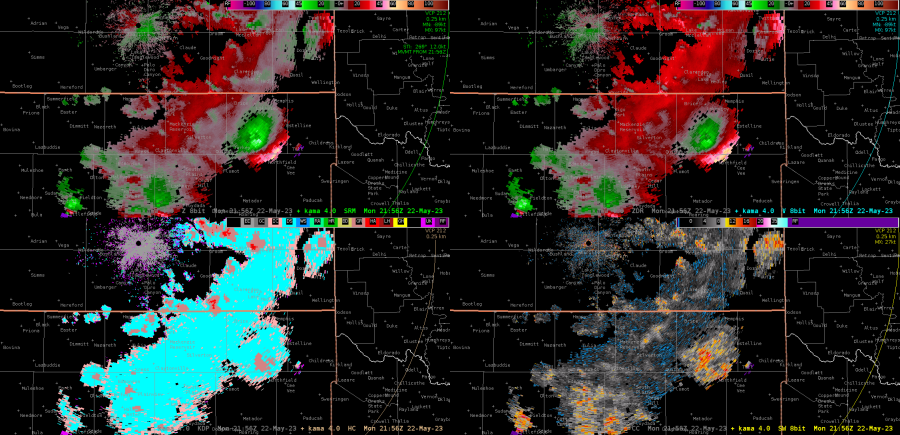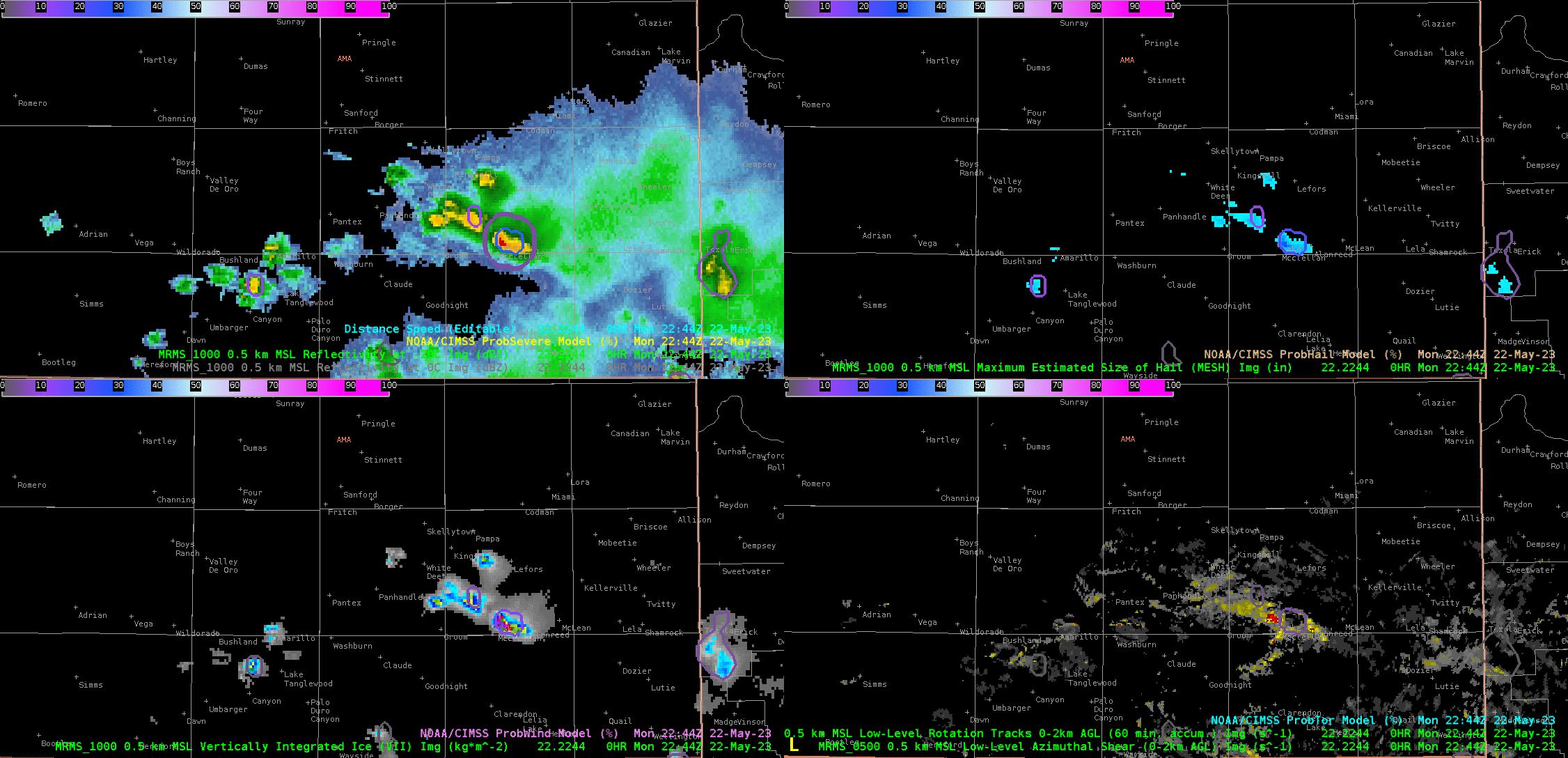A number of severe storms on May 17, 2023 illustrated improvements of ProbSevere version 3 (PSv3) over version 2 (PSv2).
Several storms in South Dakota exhibited low total-lightning flash rates (6-10 fl/min). The dearth of lightning greatly diminished the PSv2 probability of severe weather in the next 60 minutes, while not hurting the probabilities for PSv3 nearly as much.
In this storm near Rapid City, SD, PSv3 = 48% while PSv2 = 17%. This was shortly after the first 1-inch diameter hail report. The low effective shear (21 kt) was also diminishing the probability for both models. The MESH (1.62"), VIL (40 kg/m^2), ENI flash rate (6 fl/min), and lapse rate 0-3 km (9.3 C/km) were the strongest contributors here. One observation we've noticed repeatedly is that total lightning information is still important in PSv3 (even low flash rates), but does adversely diminish the probability of severe to nearly the same degree as PSv2.
 |
| Figure 1: ProbSevere, MRMS MergedRef, and NWS severe thunderstorm warning for a storm near Rapid City, SD. |
Further south, the effective shear was a bit more favorable (33 kt). At this time (see Figure 2),
PSv3 = 73% and PSv2 = 41%, and a 1-inch diameter hail report was recorded. More hail reports were recorded an hour later. The main difference between this storm and the storm in Figure 1 is that the effective shear was slightly favorable, while the low ENI flash rate was unfavorable in PSv2 (but not so in PSv3).
 |
| Figure 2: ProbSevere, MRMS MergedRef, and NWS severe thunderstorm warning for a storm west of Pine Ridge, SD. |
Traveling eastward, another severe storm produced a 60-mph wind gust at 21:46 UTC (Figure 3). At this time, PSv3 was 23% higher than PSv2 (though PWv3 was only 11%). The high MESH (1.37") and composite reflectivity (70 dBZ) help compensate for the very low shear (18 kt), while again we see that the low flash rate does not harm PSv3 as much as PSv2.
 |
| Figure 3: ProbSevere, MRMS MergedRef, and NWS severe thunderstorm warning for a storm near Belvidere, SD |
Heading to the eastern U.S., numerous trees were reported down at 18:55 UTC in eastern Alabama (Figure 4). At this time,
PSv3 = 21% and PSv2 = 2%. The flash rate was decent (25 fl/min), with a MESH of 0.57" and VIL of 31 kg/m^2. The environmental flow, however, was quite poor (eff. bulk shear = 19 kt; mean wind 1-3 km = 16 kt). An enhanced low-level lapse rate (7.5 C/km) and lower wetbulb 0C higher (11.1 kft) also nudged up the probability of severe in PSv3. Even though PSv3 was only 21%, that is a marked improvement over PSv2, and could have helped forecasters identify a possible severe weather threat sooner, while a PSv2 value of 2% would likely be ignored.
 |
| Figure 4: ProbSevere and MRMS MergedRef for a severe storm near Mount Olive, AL. |
A storm near Waynesboro, MS was increasing in probability prior to a hail report at 22:08 UTC. At this time,
PSv3 was 31% higher than PSv2 (though v3 was highlighting wind as the main threat). The MESH, flash rate, and VIL were the main contributors here, while the paltry effective shear was the top detractor (Figure 5).
 |
| Figure 5: ProbSevere and MRMS MergedRef for a severe storm near Waynesboro, MS. |
Finally, in Charleston, SC, this storm produced a hail report and multiple wind reports from 21:40 to 21:50 UTC. At this time,
PSv3 = 45% and PSv2 = 17%. Again, the flash rate, MESH, and lapse rate 0-3 km were the top contributors, whereas the lack of satellite growth was the main detractor (Figure 6).
 |
| Figure 6: ProbSevere and MRMS MergedRef for a severe storm over Charleston, SC. |
Overall, we've found that PSv3 improves severe weather detection and prediction over its predecessor, often highlighting threats sooner. For mature severe storms with very strong storm attributes, PSv2 is often higher than PSv2, sometimes by 20% or more (e.g., 95% vs. 75%). However, we believe that a little worse performance on the "high end" of storms is a good trade-off for being able to capture severe weather in more marginal (but still impactful) situations, and doing so sooner, overall.
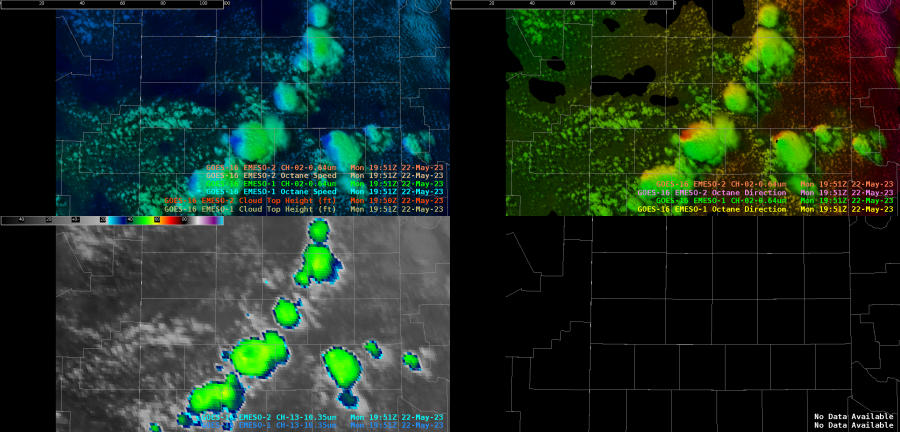

 Below is an image showing the storm's trends via the ProbSevere Time Series (storm location now just NNW of Anton). Though the ProbSevere values will lag behind the satellite imagery, one can note the storm's gradual increase in ProbSevere values with the "warming" colors of the Octane Speed product. The values then also level off, before dropping off as the cloud tops become more consistent.
Below is an image showing the storm's trends via the ProbSevere Time Series (storm location now just NNW of Anton). Though the ProbSevere values will lag behind the satellite imagery, one can note the storm's gradual increase in ProbSevere values with the "warming" colors of the Octane Speed product. The values then also level off, before dropping off as the cloud tops become more consistent. 
